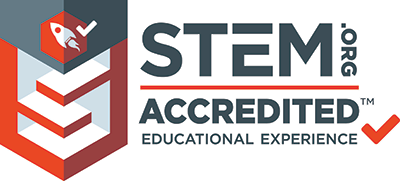Types of chemical reactions
Grade 8 Science Worksheets
Chemical Reactions
Chemical reactions are occurring all around us. They occur naturally, or they experiment within chemistry laboratories, or they are used in the manufacturing and chemical industries. They occur when one or more substances (Reactants) chemically convert to one or more other substances (Products). The physical and chemical properties of the products are different from those of the reactants. Chemical reactions are represented by chemical equations. (See also: Basics of Chemical Reactions).

Schedule a Free session to clear worksheet doubts
No credit card required, no obligation to purchase.
Just schedule a FREE Sessions to meet a tutor and get help on any topic you want!
Some examples with their accompanying chemical equations –
- Rusting, where iron combines with oxygen in the presence of water to form a red-colored oxide, is a naturally occurring process.
4Fe + 3O2 → 2Fe2O3
- Tarnishing of copper pennies because of exposure to air
4Cu + O2→ 2Cu2O
- Combustion or burning process, where a fuel such as propane, a cooking gas, reacts with oxygen at high temperature to release heat and light energy
C3H8 + 5O2 → 3CO2 + 4H2O
(propane)
- An Acid-Base reaction, such as when vinegar (acetic acid) and baking soda (sodium bicarbonate) combine to form a bubbling mixture of sodium acetate with the release of carbon dioxide gas
NaHCO3 + CH3COOH → CH3COONa + H2O + CO2
(Sodium bicarbonate) + (acetic acid) (sodium acetate)
- An Acid-Metal reaction, which dissolves the metal to form a salt, such as when magnesium is dissolved in hydrochloric acid to produce magnesium chloride, a salt
Mg + 2HCl → MgCl2 + H2
Evidence of Chemical Reaction


Rusted Gate and Rusted Teapot
Chemical reactions usually produce telltale signs that a change has occurred.
The most common signs are –
- Change in color – the Statue of Liberty has turned green from its original copper color due to oxidation
- Change in temperature – adding calcium chloride to water heats the solution due to the formation of hydrochloric acid
- Release of an odor – a rotting egg or burning wood both produce odor
- Produce bubbles (formation of gas) – adding dry yeast to hydrogen peroxide solution produces bubbling and fizzing due to formation of oxygen gas
- Precipitate in a liquid (formation of a solid) – calcium chloride and sodium carbonate solutions when mixed produce calcium carbonate, a precipitate (solid)
Learn more about Types of Chemical Reactions and other important topics with 8th Grade Science Tutoring at eTutorWorld. Our expert science tutors break down the topics through interactive one-to-one sessions. We also offer the advantage of customized lesson plans, flexible schedules and convenience of learning from home.
eTutorWorld Understands Math Tutoring | Online Math Worksheets are Important Tools
Understanding graphs, charts, and opinion polls in a newspaper, for calculating house and car payments, and for choosing a long-distance telephone service are impossible without strong math skills …and the only way to develop strong math skills is by constant practice.
‘Practice makes a man perfect’ holds true for no other field better than for math. A middle or high school student must set aside a minimum of an hour for math every day. Other than textbooks, worksheets help you revise and understand concepts better.
Our expert tutors prepare online maths worksheets that are age and grade-appropriate. Grade-wise math worksheets for Elementary Math, Arithmetic, Pre-Algebra, Algebra, Geometry, Trigonometry, Statistics, Pre-Calculus and Calculus can be solved to improve math skills, to get ahead or to even catch up.
You may download these FREE online math worksheets in the PDF format, and then print and email us their solutions for a free evaluation and analysis by eTutorworld’smath expert tutors.
You may solve these worksheets by yourself or with your peers while studying together.
The Answer Key at the end of each worksheet allows for a self-evaluation.
Personalized Online Tutoring
eTutorWorld offers affordable one-on-one live tutoring over the web for Grades K-12, Test Prep help for Standardized tests like SCAT, CogAT, MAP, SSAT, SAT, ACT, ISEE and AP. You may schedule online tutoring lessons at your personal scheduled times, all with a Money-Back Guarantee. The first one-on-one online tutoring lesson is always FREE, no purchase obligation, no credit card required.
For answers/solutions to any question or to learn concepts, take a FREE CLASS.
No credit card required, no obligation to purchase.
Just book a free class to meet a tutor and get help on any topic you want!
Exothermic and Endothermic Reactions
Most chemical reactions involve the release of energy in the form of heat or light. Such reactions are called Exothermic Reactions. Some reactions, however, involve absorption of energy (heat) and these are called Endothermic Reactions.

Some examples –
- Any combustion reaction such as lighting a candle or a firecracker is exothermic
- Dissolving a salt in water, such as ammonium chloride, potassium chloride or ammonium nitrate, is endothermic
- A Neutralization reaction between an acid and a base to form water and a salt is exothermic
- Formation of nitric oxide from the reaction between nitrogen and oxygen is endothermic
- Thermite or welding process to join iron pieces is exothermic
Oxidation and Reduction Reactions
Oxidation and reduction reactions are those in which there is a transfer of electrons between the participating reactants and products. In an Oxidation reaction, a substance loses electrons and forms positive ions. In a Reduction reaction, a substance gains electrons and forms negative ions. The reduction is the reverse process of oxidation. The degree of oxidation of an atom in a chemical compound is referred to as its Oxidation State or Number.
Oxidation is always accompanied by reduction because the electrons released by one substance during oxidation must be captured by another substance during reduction. The combined transfer of electrons is referred to as a Redox Reaction.
For example, heating iron and sulfur together causes each iron atom to lose two electrons and become an Iron Ion, which is picked up by the sulfur atom to create a Sulfide Ion. The sulfide ions and iron ions combine to form iron sulfide, a compound.
Δ(heat)
Fe + S → FeS
(iron) (sulfur) (Iron sulfide)
Redox reactions often include the gain or loss of oxygen, such as when a metal reacts with oxygen to form an Oxide. For example, magnesium metal combines with oxygen to form magnesium oxide. Its reverse, in which magnesium oxide reacts with carbon at very high temperature to form magnesium metal and carbon monoxide, is a reduction reaction.
2Mg + O2 → 2MgO (oxidation reaction)
MgO + C → Mg + CO (reduction reaction)
In a reaction between lead oxide and ammonia gas, lead oxide is reduced to the metal lead, while ammonia is oxidized to nitrogen gas.
3PbO + 2NH3 → N2+ 3H2O+ 3Pb
Other redox examples include rusting, combustion, photosynthesis, and decomposition.
Combination and Decomposition Reactions
A Combination Reaction is one in which the reactants combine to form a product. For example, carbon, when burned in the presence of oxygen, produces carbon dioxide.
Δ (heat)
C + O2 → CO2
A Decomposition Reaction is one in which a reactant breaks down or Dissociates to form two or more products. The hydrolysis of water is a common example.
2H2O → O2 + 2H2

Check Point
- Heat or light is released in the form of energy in an _______ reaction.
- A reaction between acid and base to form salt and water is called a _______ reaction.
- A reaction in which a substance loses electrons is termed as _______ reaction.
- A combination of oxidation and reduction reactions is called a _______ reaction.
- A reaction in which a reactant breaks down to form two or more products is called a ______ reaction.
Answer Key
- Exothermic
- Neutralization
- Oxidation
- Redox
- Decomposition
Schedule a Free session to clear worksheet doubts
No credit card required, no obligation to purchase.
Just schedule a FREE Sessions to meet a tutor and get help on any topic you want!
Pricing for Online Tutoring
| Tutoring Package | Validity | Grade (1-12), College |
|---|---|---|
| 5 sessions | 1 Month | $139 |
| 1 session | 1 Month | $28 |
| 10 sessions | 3 months | $269 |
| 15 sessions | 3 months | $399 |
| 20 sessions | 4 months | $499 |
| 50 sessions | 6 months | $1189 |
| 100 sessions | 12 months | $2249 |
8th Grade Free Worksheets
- The Universe
- Heredity
- Evolutionary Theory
- Structure of the atom
- Ethical Practices
- Unveiling the mystery behind the physical universe
- Components of the universe
- Celestial phenomena
- The tilt of Earth’s axis
- The causes of high and low tides
- Earth Systems
- Rocks and Fossils
- Weather and Climate
- Basics of chemical reactions
- Types of Chemical reactions – Endothermic, exothermic, oxidation, reduction reactions
- Catalysts and enzymes
- Compounds and mixtures
- Acids, Bases and pH Indicators
Images Credit:
https://p0.pxfuel.com/preview/543/645/127/chemistry-lab-experiment-chemist.jpg
https://storage.needpix.com/rsynced_images/corrosion-4047268_1280.jpg
https://live.staticflickr.com/2452/3815062641_9b3d7e716b_b.jpg
https://upload.wikimedia.org/wikipedia/commons/thumb/5/5b/ThermiteReaction.jpg/330px-ThermiteReaction.jpg
https://upload.wikimedia.org/wikipedia/commons/d/d1/CNX_Chem_17_06_Statue.jpg
IN THE NEWS

Our mission is to provide high quality online tutoring services, using state of the art Internet technology, to school students worldwide.
Online test prep and practice
SCAT
SSAT
ISEE
PSAT
SAT
ACT
AP Exam
Science Tutoring
Physics Tutoring
Chemistry Tutoring
Biology Tutoring
Math Tutoring
Pre-Algebra Tutoring
Algebra Tutoring
Pre Calculus Tutoring
Calculus Tutoring
Geometry Tutoring
Trigonometry Tutoring
Statistics Tutoring
Quick links
Free Worksheets
Fact sheet
Sales Partner Opportunities
Parents
Passive Fundraising
Virtual Fundraising
Our Expert Tutors
Safe and Secure Tutoring
Interactive Online Tutoring
After School Tutoring
Elementary School Tutoring
Middle School Tutoring
High School Tutoring
Home Work Help
Math Tutors New York City
Press
©2022 eTutorWorld Terms of use Privacy Policy Site by Little Red Bird
©2022 eTutorWorld
Terms of use
Privacy Policy
Site by Little Red Bird






